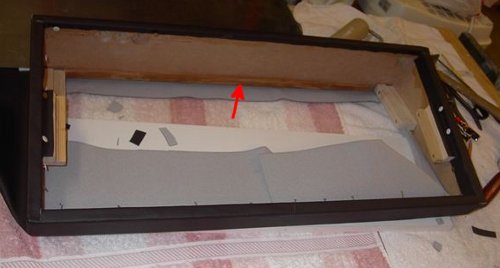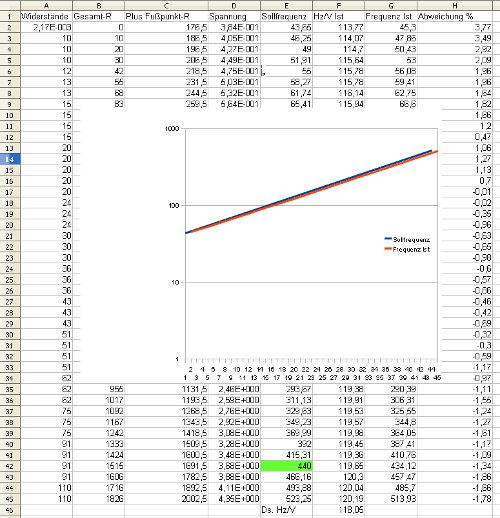(The Small / Tiny / Little One)
This blog is about the restoration of a very rare synthesizer: Der Kleine made by Wolfgang Palm, only three were built in the early 1970s.
It came to me together with the remainings of something which would eventually have been a case once upon a time. At the moment, a new housing is being made from medium density fibre board (while chipboard is wood particles with some glue, MDF is just the opposite). Have a look at an early stage here:
In the mean time, the keyboard has been moved up about one centimeter, the spaces left and right from the keyboard are covered and a bottom cover is being cut and drilled these days.
After that, the case will be wrapped in some kind of artificial leather, just like the original.
[Update June 9: Der Kleine getting its new dress]
The red arrow i pointing to the only part taken from the old case for good karma: the wooden strip that supports the operating panel.
All potentiometers and switches will be replaced, a new power supply featuring a toroid transformer and for the first time compliance with the local electrical regulations will be built.
Several capacitors and resistors will be replaced, missing parts added, followed by a first test and calibration. Some more photos of the electronics will follow.
I’ve reverse engineered the circuit, a small service and usage manual will be available for download here soon. I’ll give some details on the circuit as well as on the functions and ranges of the knobs, so it would probably worth to read for musicians as well as for technicians.
The VCO of Der Kleine is somewhat different from the majority of other analog synths: it needs a linear-in-frequency control voltage, the slope will be around -118Hz/V calculated from circuit components.
No, no negative frequency, but negative CV 😉
To allow for external control, I’ll add a trigger input and for compatibility reasons a log-to-lin converter translating the usual V/oct control voltage into the linear scale needed by the oscillator.
Here’s a screen shot of some calculations done based on the values of resistor string on the keyboard, comparing the frequencies generated by Der Kleine to those of the actual note values (covering the range from F1 to C5)



